Industry-academia project in Atlantic Canada explores impacts of climate change
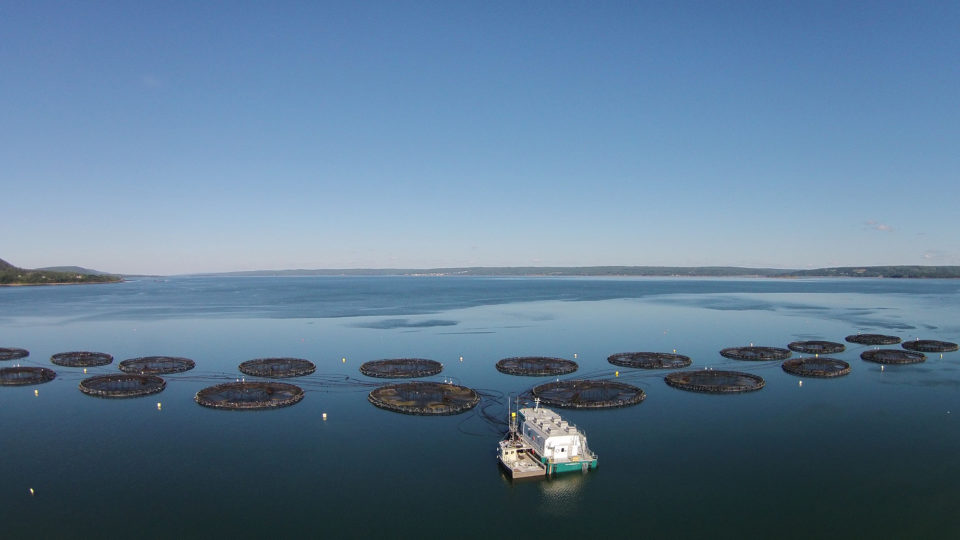
Atlantic Canada salmon producers regularly monitor sea temperatures, and one thing has become very clear: The water is warming.
“We’re definitely seeing increased water temperatures and that’s supported by a number of other aquaculture agencies as well,” said Sue Farquharson, executive director of the Atlantic Canada Fish Farmers Association.
In the Bay of Fundy, between New Brunswick and Nova Scotia, warmer water temperatures in recent years have lingered later into the year.
“Normally we start to cool off in November/December,” said Farquharson. “Now we’re not cooling off until December/January.”
In summer 2016, Bay of Fundy fish farmers saw water temperatures reach unseasonably high levels in southwest New Brunswick and remain unseasonably high all through December, according to ACFFA.
“These temperatures held for an extended period, contributing to increased sea lice populations,” according to the organization’s 2016 New Brunswick Annual Sea Lice Management Report.
The peak that summer was 13.5 degrees-C. Temperature determines treatment for sea lice. Hydrogen peroxide is not a recommended treatment above 14 degrees C. (Ref: Thomassen, J.M. 1993. Hydrogen peroxide as a delousing agent for Atlantic salmon. In: Boxhall, G.A., Dwfaye, D. (Eds.), Pathogens of Wild and Farmed Fish. Sea Lice. Ellis Horwood Limited.)
It’s climate change. It’s not static. You never know year to year what you’re going to get.
“Industry continued to witness higher water temperature trends with the average water temperatures in this area in December 2016 over 8 degrees-C,” according to the sea lice report.
Industry data for near-shore areas reflects the Canadian government’s data for warmer waters offshore.
“It’s climate change. It’s not static. You never know year to year what you’re going to get,” said Farquharson.
Operators are also adapting to other signs of climate change. They are, for example, investing in more robust predator net systems to protect farmed salmon from greater numbers of gray seals and the white sharks that prey on them, said Farquharson. The range of several species in the Atlantic is shifting northward.
Farmers also face more frequent heavy rains and coastal flooding of hatchery buildings. For about a decade, shellfish growers have been observing and adapting to more acidic waters due to the oceans’ absorption of carbon dioxide that hamper the animals’ ability to make shells.
By now, aquaculture and fisheries worldwide are seeing effects of climate change, plus events like the El Niño-Southern Oscillation and extreme weather events, according to the 2016 United Nations Food and Agriculture Organization Assessment Report, “Climate Change Implications for Fisheries and Aquaculture.”
“Underlying climate-related physical and chemical changes are linked to yet growing carbon dioxide (CO2) emissions, which are being absorbed in large part by the aquatic systems and trigger substantial shifts of aquatic ecosystems and related services, with socio-economic consequences around the globe,” stated the report.
In Atlantic Canada, the aquaculture industry, government and academia are investing in research to help answer big questions about what these new conditions mean for fish health and farm operations.
How warm is too warm for salmon?
Scientists have long known that water temperature is a crucial consideration for salmon farming. A 1995 paper – cited in chapter 6 of a 2013 report by Canadian government researchers exploring the impacts of climate change on the region and its marine aquaculture – determined the optimal temperature range for growing Canadian strains of Atlantic salmon from smolt to market size in a sea cage off Nova Scotia or New Brunswick was 8 to 12 degrees-C (46.4 to 53.6 degrees-F).
At 16 degrees-C (60.8 degrees-F), the 1995 paper also concluded, conditions become “unfavorable” as risk increases for disease outbreaks or algae blooms that can remove oxygen from the water. (Saunders, R.L. 1995. Salmon Aquaculture: Present Status and Prospects for the Future. In “Cold-Water Aquaculture in Atlantic Canada. Second Edition” Edited by Bogden, A.D. Pg 255-296.)
But, said Gregor Reid, a biologist with Fisheries and Oceans Canada who works on aquaculture sustainability: “1995 is ancient history in salmon aquaculture. There is always a time lag between what is happening at the farm and what comes out in print.”
A more recent paper from 2010 reports 22 to 28 degrees C as the upper critical range for Atlantic salmon and 30 to 33 degrees as their upper lethal limit.
A five-year, $4.4 million study aims to provide more answers and a way for producers to adapt.
Fish only have a certain temperature they can tolerate because they can’t regulate body temperatures.
Cooke Aquaculture, the largest producer of farmed salmon in Atlantic Canada, is the producer-partner on the study and already taking steps to reduce its risk.
“We are already planning to expand our hatchery operations so that we can grow larger smolts before putting them out to sea,” said Nell Halse, Cooke spokeswoman. “This will limit each crop to one winter at sea.”
Cooke has about 100 salmon farms off Maine and New Brunswick, Nova Scotia and Newfoundland. Not all are active at the same time, as part of the company’s site-fallowing protocol. Cooke also operates in the Pacific Northwest, where the net pens at its Cypress Island facilities off Washington recently failed, releasing fish from pens stocked with 305,000 fish; about half have been recovered. The incident is under investigation.
“Today, very little is known about increasing temperatures and hypoxia in ocean waters, both deemed to be potential results of climate change and about their potential impacts on animals and fish such as salmon,” said Halse.
“As a company, we want to understand the impacts of increased ocean water temperatures and hypoxia on salmon, both lethal and sub-lethal impacts,” said Halse. “Often, the sub-lethal impacts can be just as detrimental in economic terms when it affects the fish’s ability or capacity to achieve its optimal growth potential and/or feed conversion efficiency resulting in poor biological performance and in turn, economic or financial loss.”
Researchers Mark D. Fast, associate professor of fish health at Atlantic Veterinary College at the University of Prince Edward Island, and Kurt Gamperl, of the department of Ocean Sciences and Biology at Memorial University of Newfoundland are leading the project.
There are reports of temperatures at some locations of 18 degrees-C and higher at some sites in Newfoundland, according to Gamperl.
They plan to study fish physiology under higher temperatures and lower oxygen levels, hunt for genetic biomarkers to help producers identify the fish most resistant to the stress of changing environmental conditions and look to develop better diagnostic tools to assess health and welfare of Atlantic salmon.
“We’re concerned about the direct effects of temperatures on the fish themselves and their welfare,” said Gamperl. “Fish only have a certain temperature they can tolerate because they can’t regulate body temperatures.”
If the water is too warm, it can hurt fish health and welfare and affect growth and production for the industry. As water temperatures rise, fish consume more oxygen and warmer water holds less oxygen than cold water.
“So we’re performing experiments to determine at what temperatures these animals become stressed, how severe it is and these types of issues,” said Gamperl.
The Atlantic Innovation Fund program is providing $3 million to the project and Innovate Newfoundland is funding $500,000. About $1 million is coming from industry partners, including Cooke, and academic collaborators, including both Fast and Gamperl’s universities.
Cooke also hopes to learn how changes in temperature and hypoxia affect common salmon diseases like infectious salmon anemia, bacterial kidney disease and sea lice.
A second key part of the research project is to tap Cooke’s genetics program to find the fittest fish, select top families and identify genetic markers for increased disease resistance and temperature tolerance.
The project’s results may help the company select new sites or relocate to sites better suited to new farming conditions, she said.
A final, key goal of the project is to develop better diagnostic tools to assess health and welfare of Atlantic salmon and better therapeutants.
Making sense of changes
The sooner the better.
Canada’s Department of Fisheries and Oceans monitors water temperatures from 10 km offshore to the end of the Scotian Shelf.
Temperatures well offshore, on the Scotian Shelf in 2016 climbed to three degrees above the 30-year average, according to survey data from Canada’s Department of Fisheries and Oceans. Last year’s water temperatures were one of the warmest on record, said DFO research scientist Dave Hebert.
“Trends are difficult to state with short (50 year) time series,” said Hebert.
Pinpointing a single driver of the observed changes is difficult, he said.
“Also, when you get a period of warm conditions is [it] a change in conditions or just natural variability. Since 2010, water temperatures have generally above normal (1981-2010 average). Did things change or is it just the natural variability is hard to say.”
And the data does not predict what happens next.
It’s pretty safe to say temperature changes [in the Atlantic] are linked to climate change.
“The scary thing is that numerical climate models sort of say that when things change conditions flip from one state to another. The problem is that the observations will only confirm this after the fact when we have enough years of data,” said Hebert.
It is tough to tease out climate change from many layers of variability in a complex system, said Gregor Reid, a biologist with Fisheries and Oceans Canada who works on aquaculture sustainability.
But every report from the Intergovernmental Panel on Climate Change is more conclusive. “It’s unequivocal at this point,” he said.
Charts plotting temperature data over decades tend to show lines with temperatures that vary in a given year or decade but over several decades consistently edge upward.
“It’s pretty safe to say temperature changes [in the Atlantic] are linked to climate change,” said Reid.
He worked with the Atlantic Canada Fish Farmers Association to hold a set of workshops on aquaculture and climate change in 2015. Reid was also the lead author on a literature review paper on climate change and aquaculture.
While temperature thresholds are a good guide, Reid cautioned that there were many factors at play about whether a bump in temperature can hurt the fish. It depends on how long the water stays that temperature, whether there is cooler water elsewhere in the water column, how much oxygen is in the water at the time, how much sea lice are affecting that particular fish.
There are so many factors at play that a real-time monitoring system of conditions is needed, said Farquharson.
The association is hoping to place and promote real-time environmental monitoring of temperature, oxygen, carbon dioxide, nitrates and salinity not just on sites, but in the Bay of Fundy and accessible to all users, she said.
“The data will be there and connected into a larger global system, and can be used for research and for understanding trends and adapting to those,” she said.
The cost? Too fluid to determine right now, said Farquharson, who envisions the funding would come from a collaboration of federal and provincial government plus industry with expertise support from academic institutions.
Author
-

Lisa Duchene
Lisa Duchene is a freelance conservation science writer, editor and communications consultant based in central Pennsylvania. She has written about the marine environment for more than two decades.
Tagged With
Related Posts
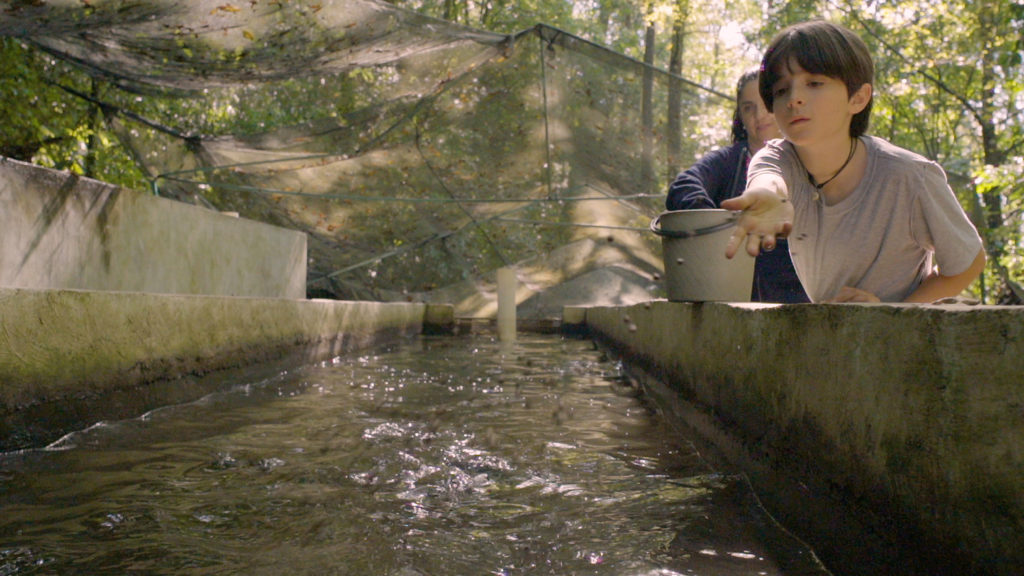
Intelligence
A motive, and a market, for farmed fish in Mexico
Boasting ample areas for aquaculture and a robust domestic demand for seafood – not to mention its close proximity to the U.S. market – a land of opportunity lies in Mexico. Fish farming is primed to meet its potential south of the border.
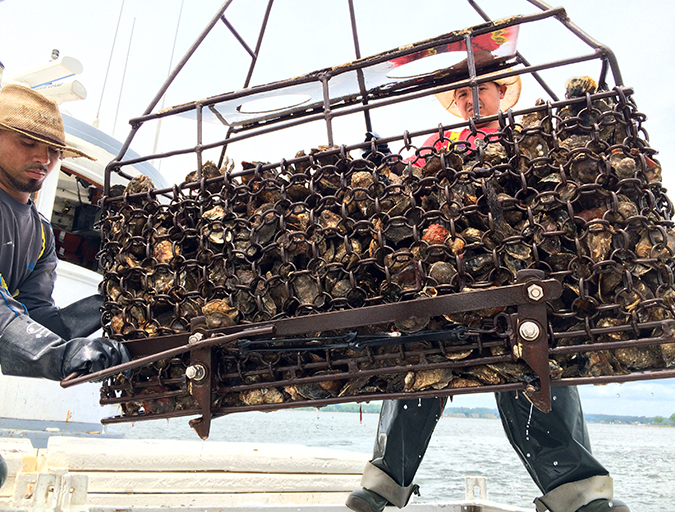
Intelligence
As ocean temperatures rise, so too will vibrio outbreaks
A study using a half-century of data has linked climate change and warming sea temperatures with an increase in illnesses from the common vibrio bacteria. Shellfish growers, fighting a particularly virulent strain of Vibrio parahaemolyticus, are changing their harvest protocols.
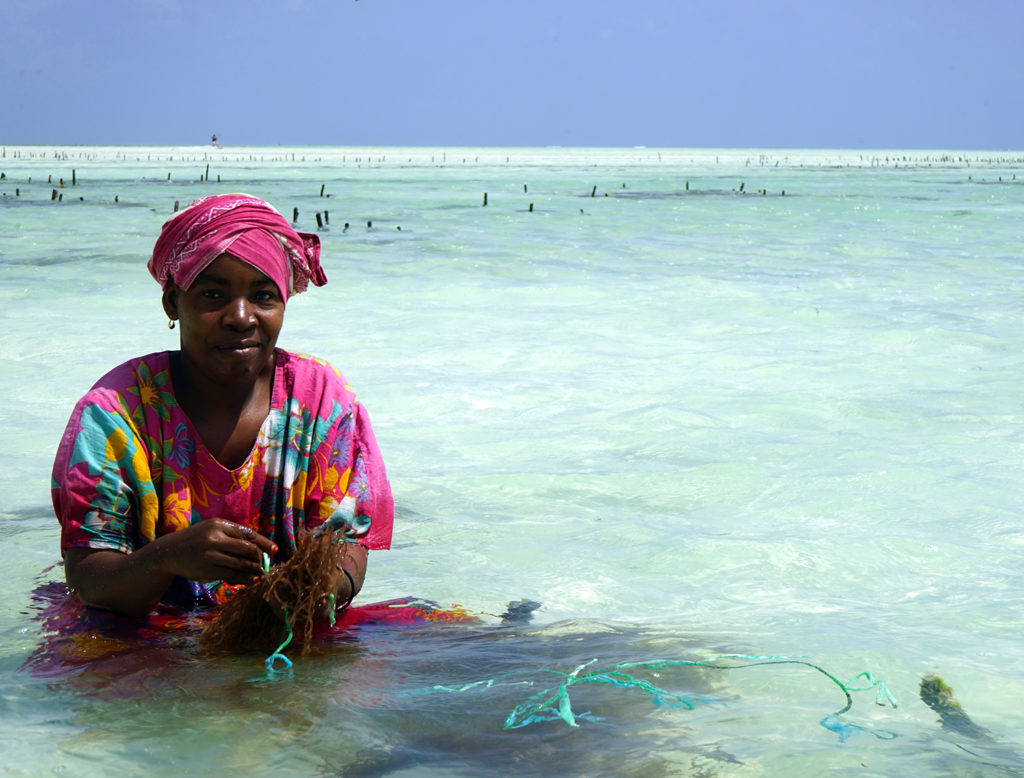
Responsibility
Ocean permaculture: Air conditioning for warming seas
Combining geophysical fluid dynamics and marine biology, Brian Von Herzen’s visionary technology will soon be tested off the coast of Massachusetts before export to the Indian Ocean.
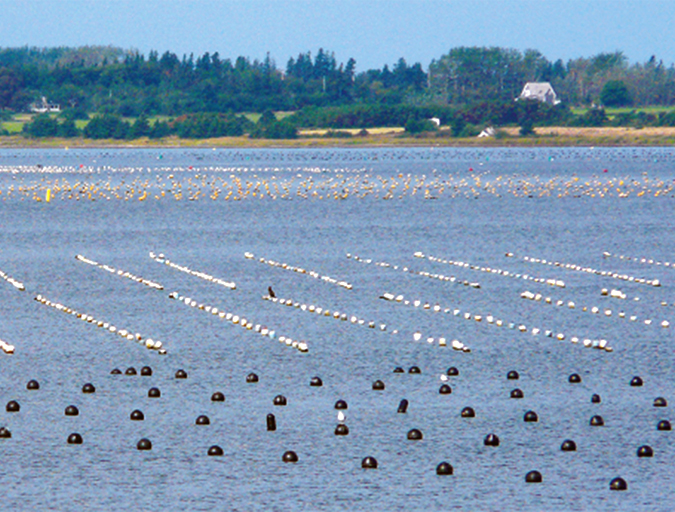
Innovation & Investment
Aquaculture in Canada: status, perspectives
Canada exports farmed seafood products to more than 22 countries and is the main seafood supplier to the U.S. market. Finfish, primarily salmon, production is strong and shellfish production is growing, but diversification will be imperative to maintain competitiveness.

